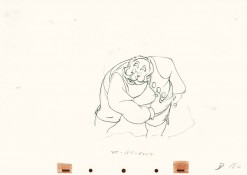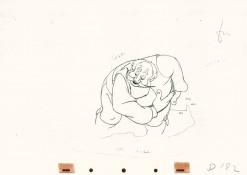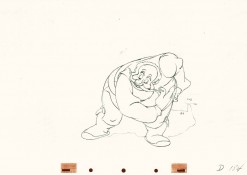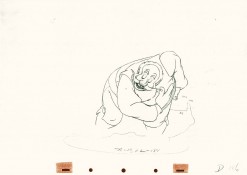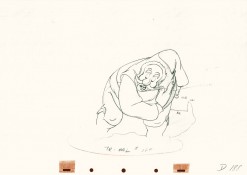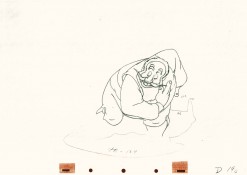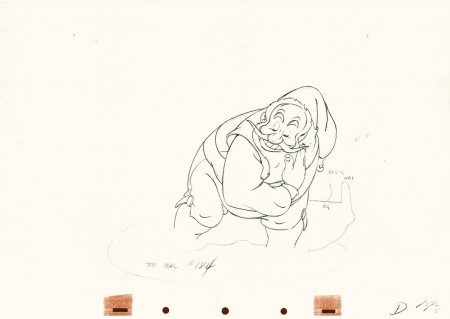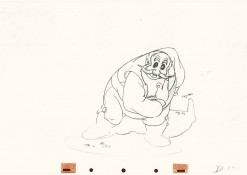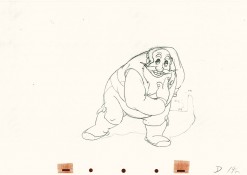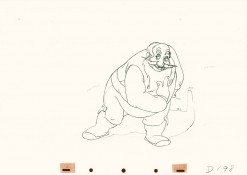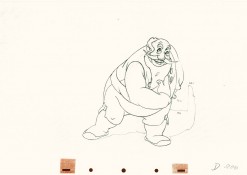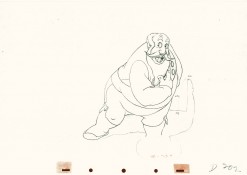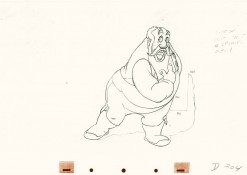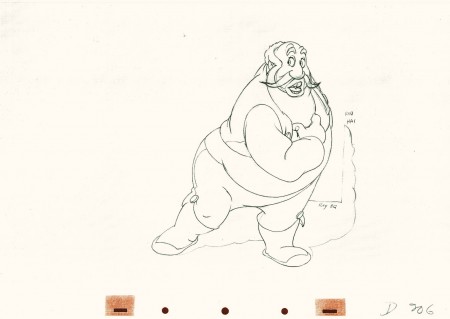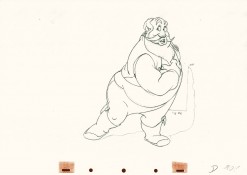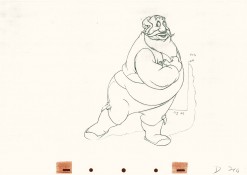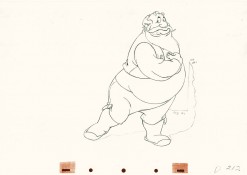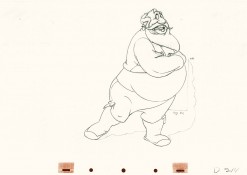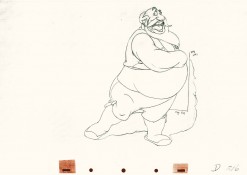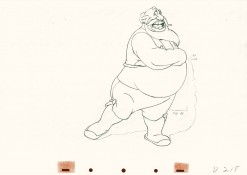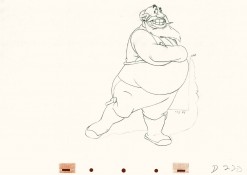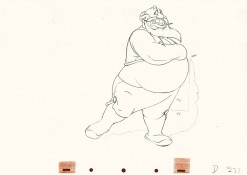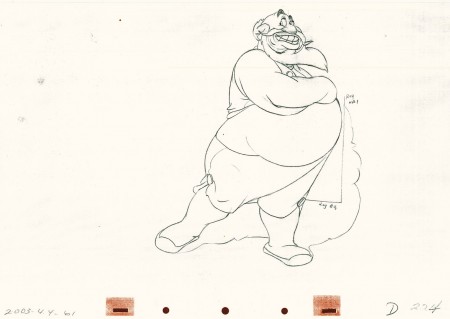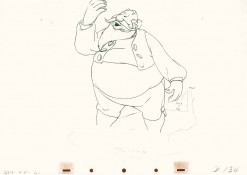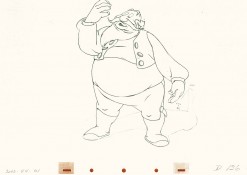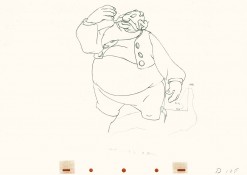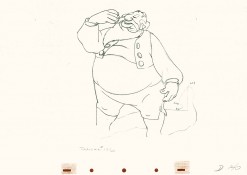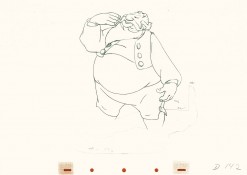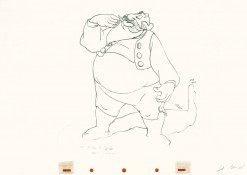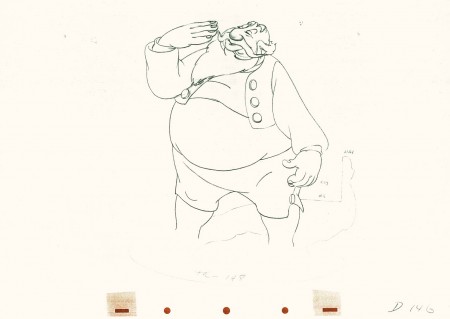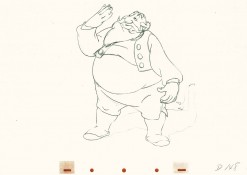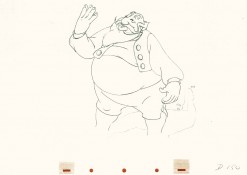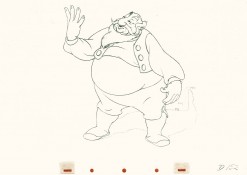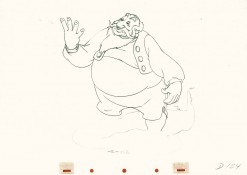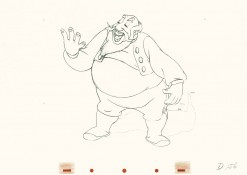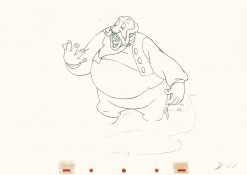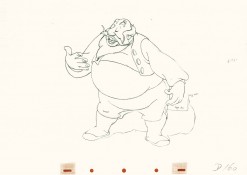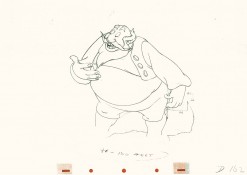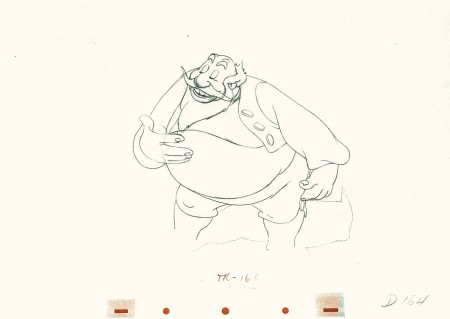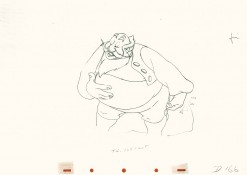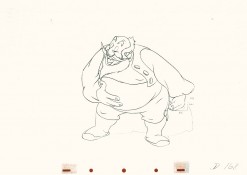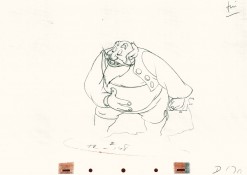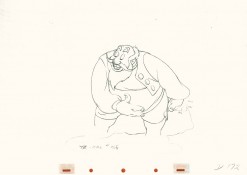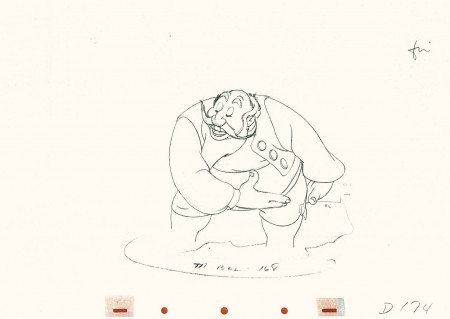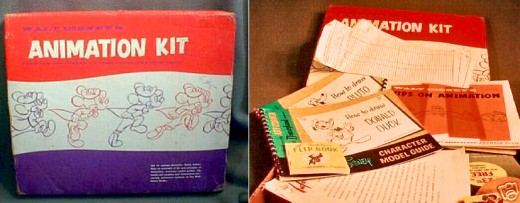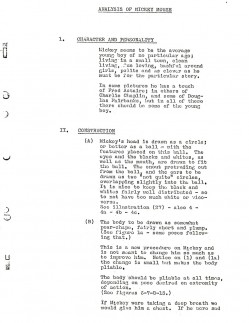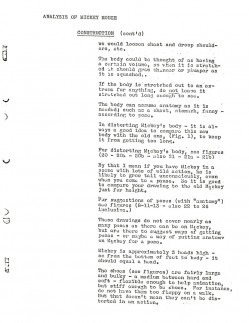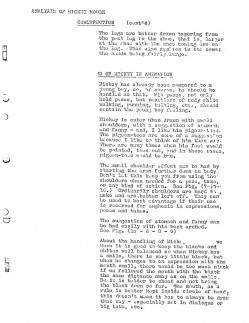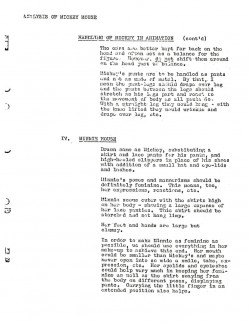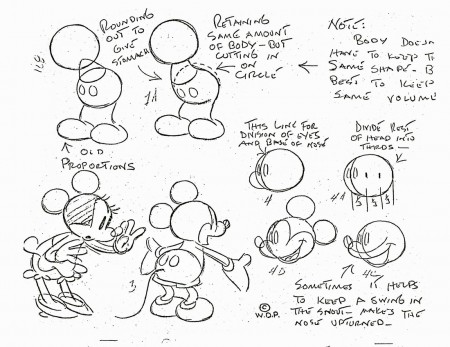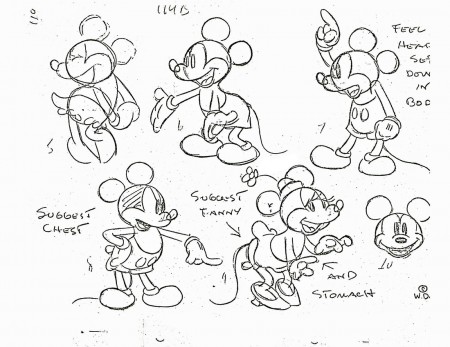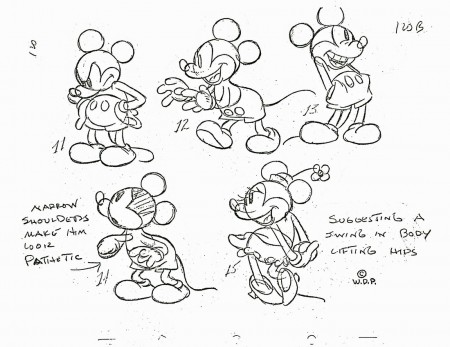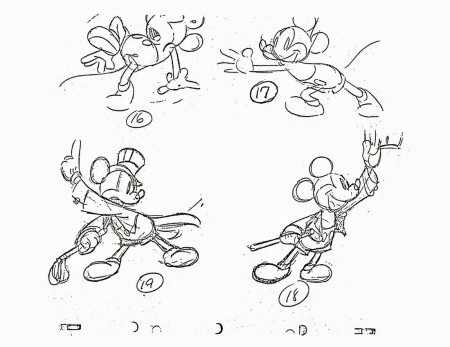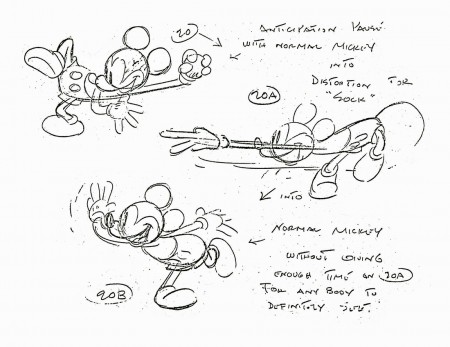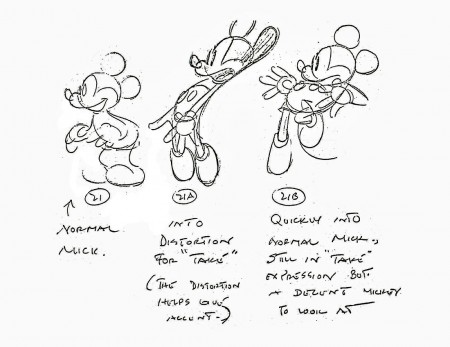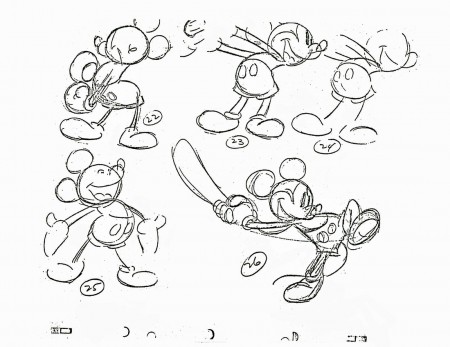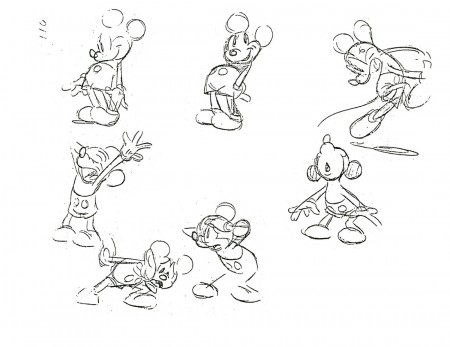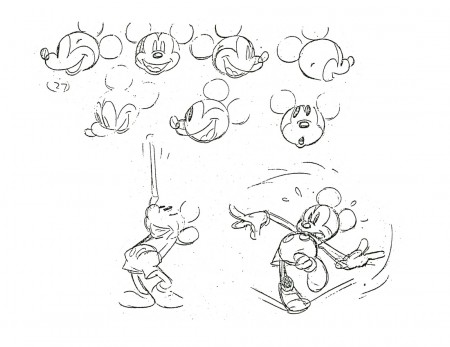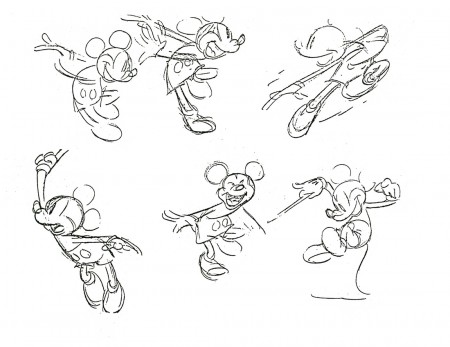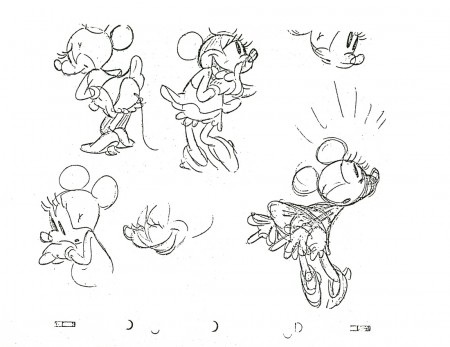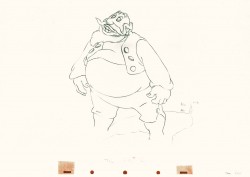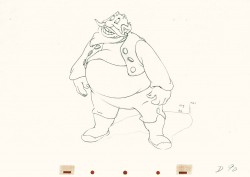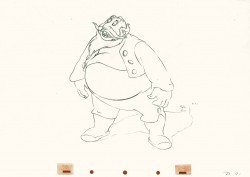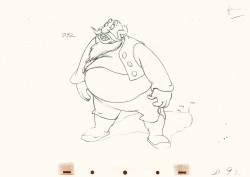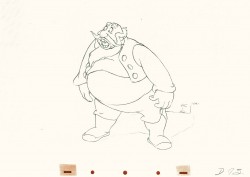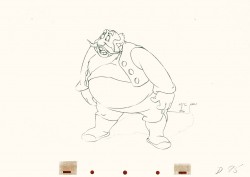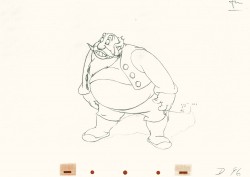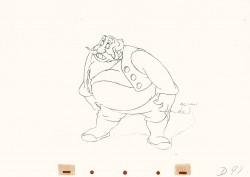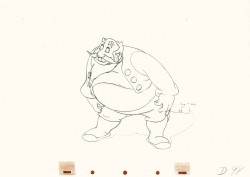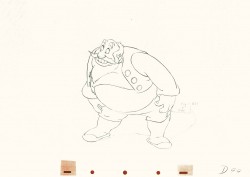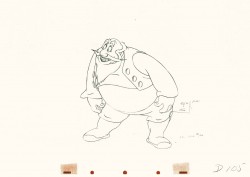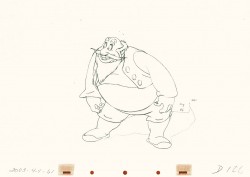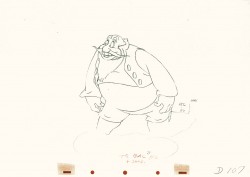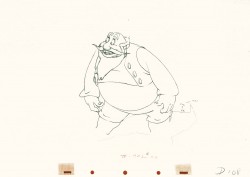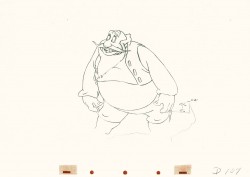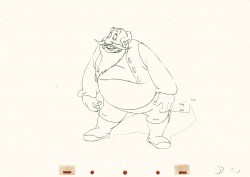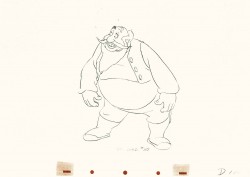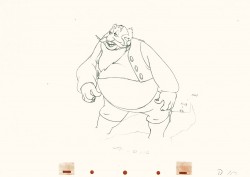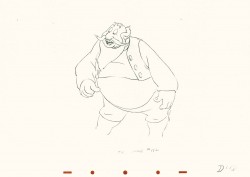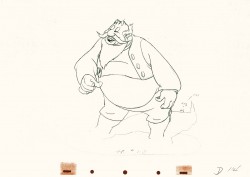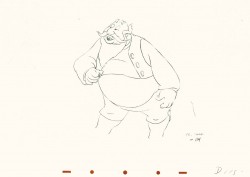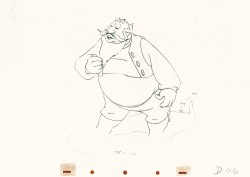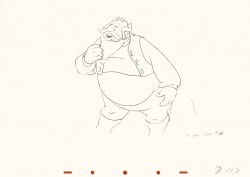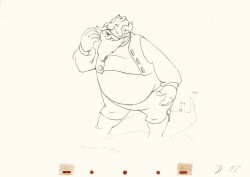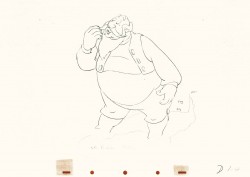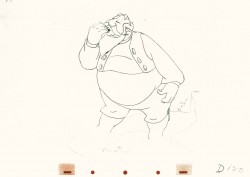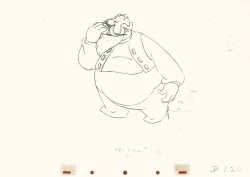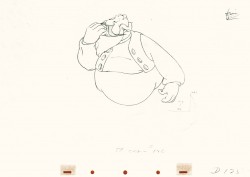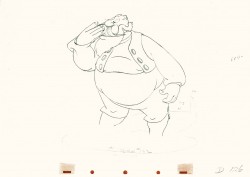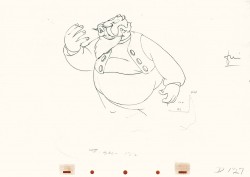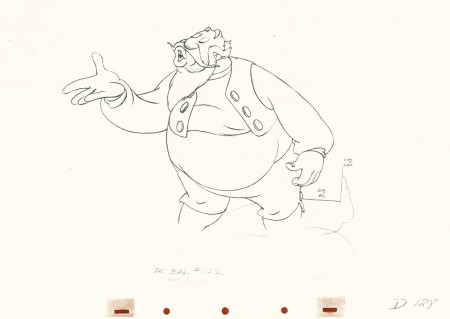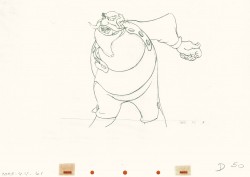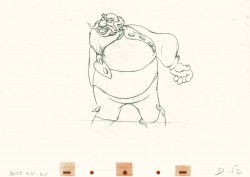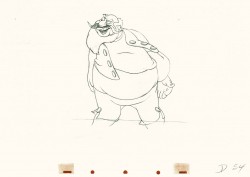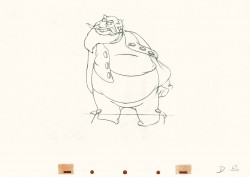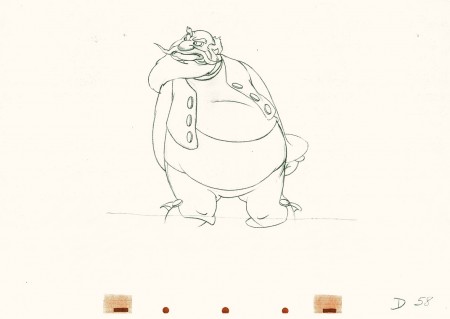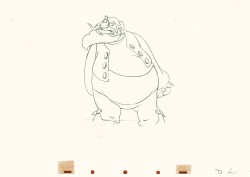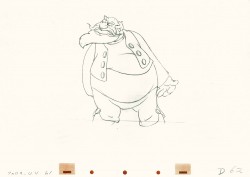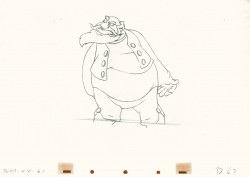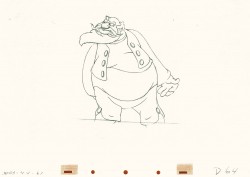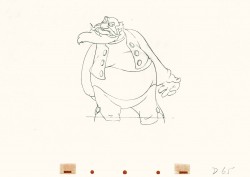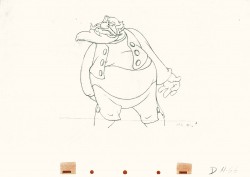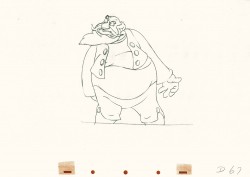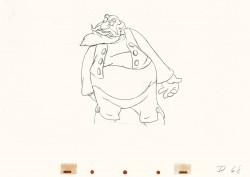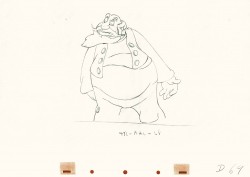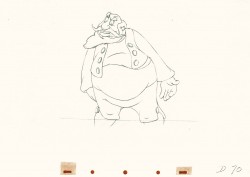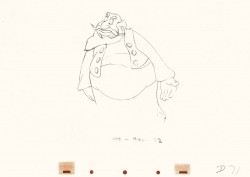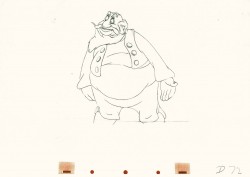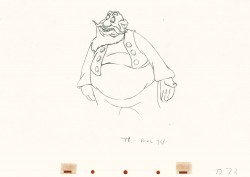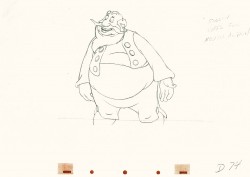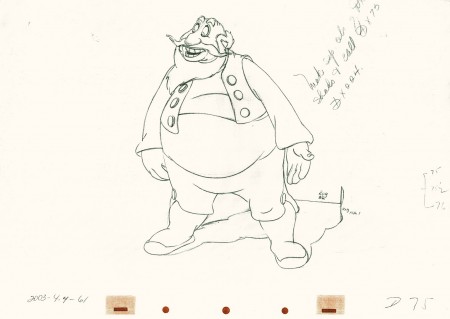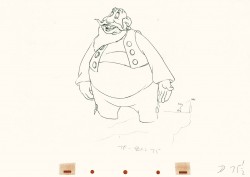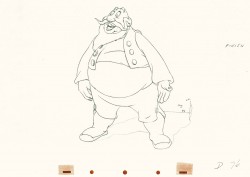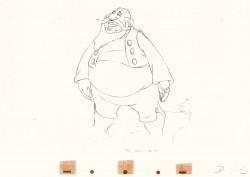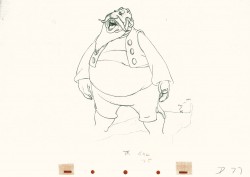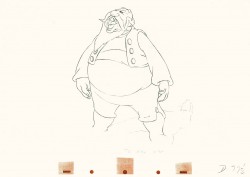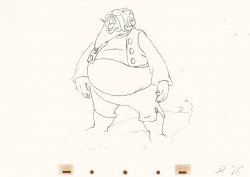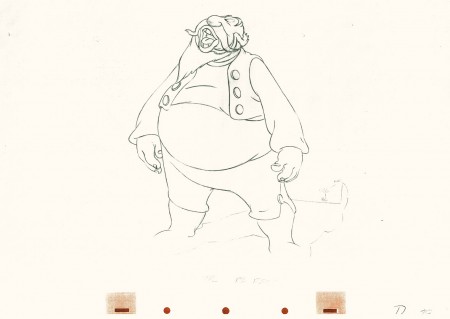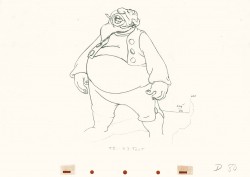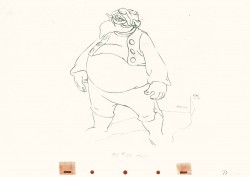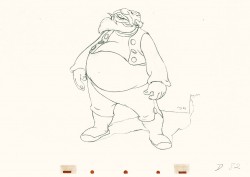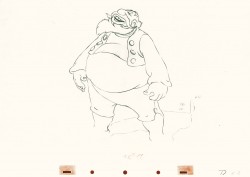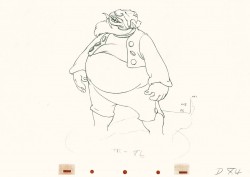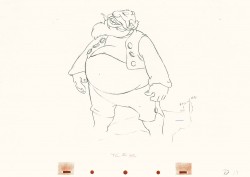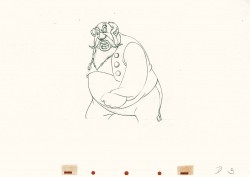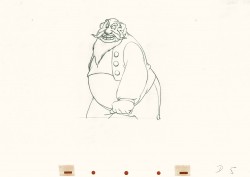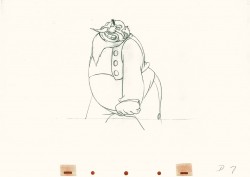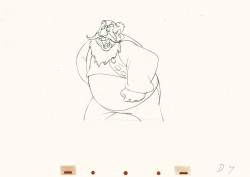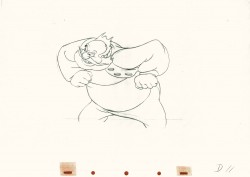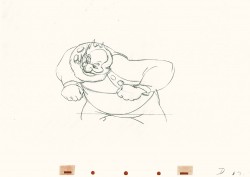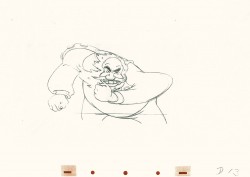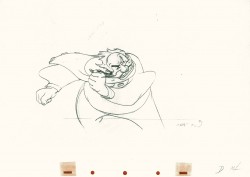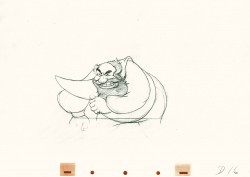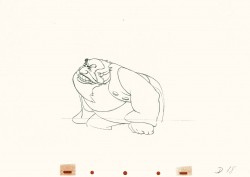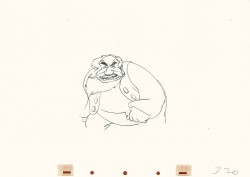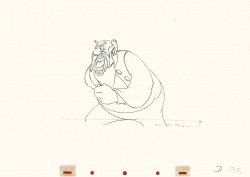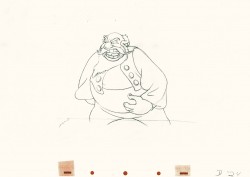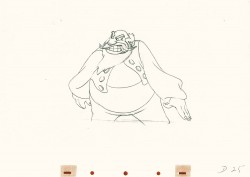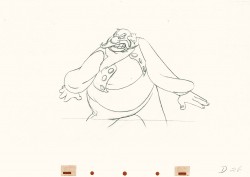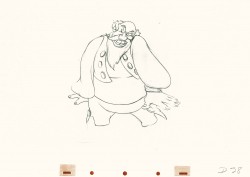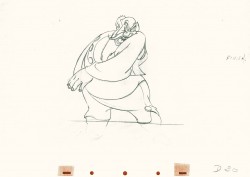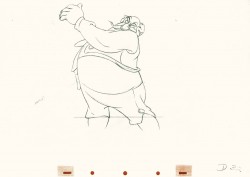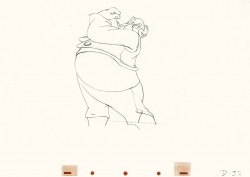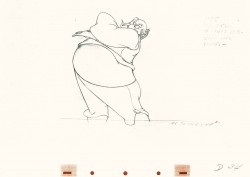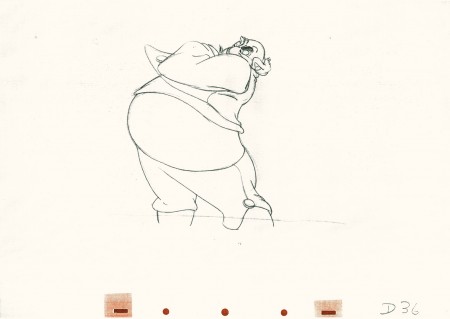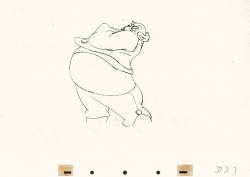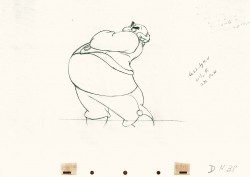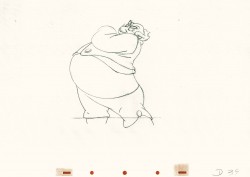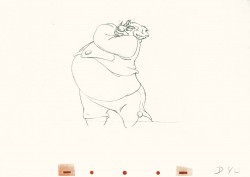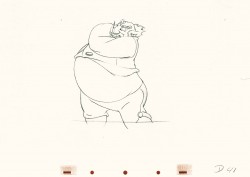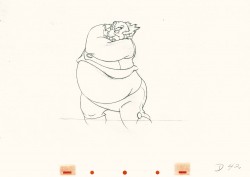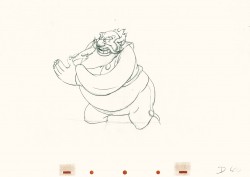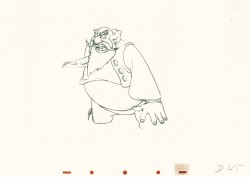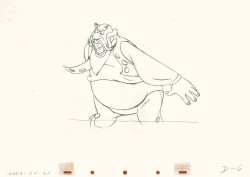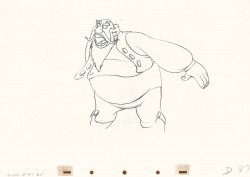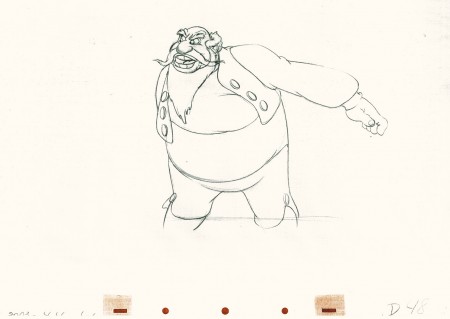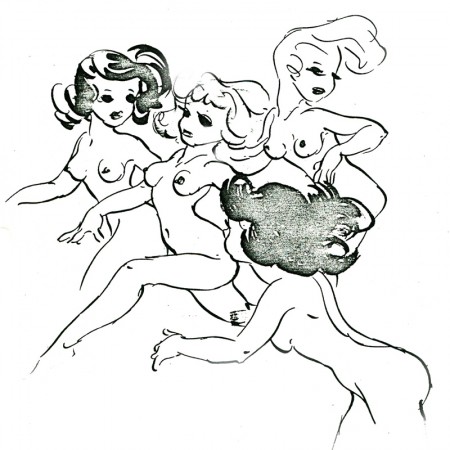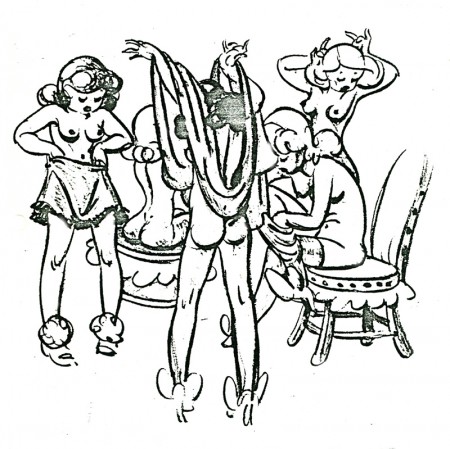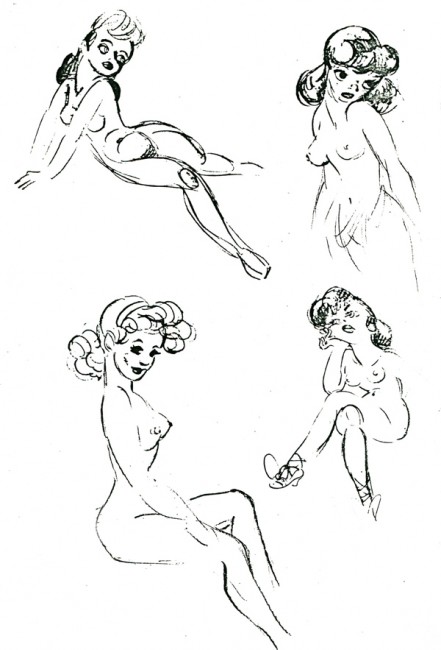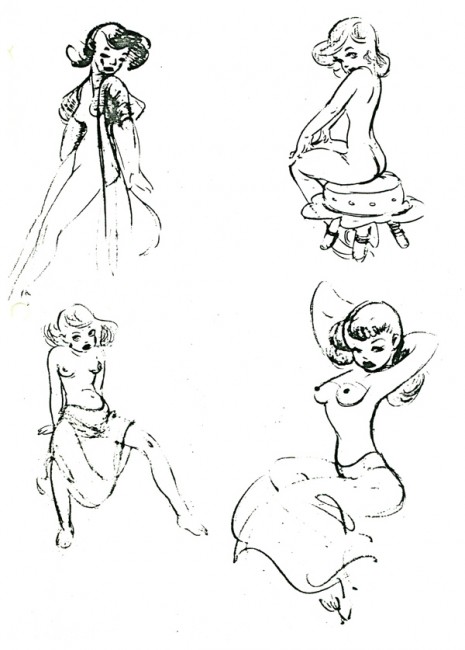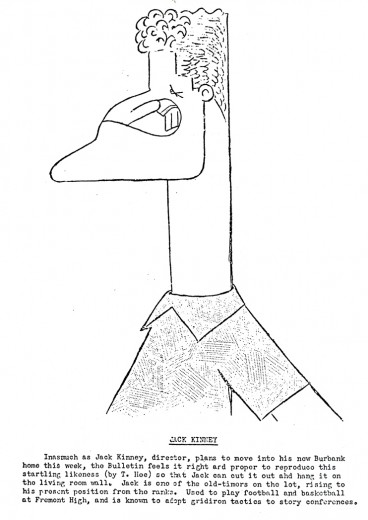Category ArchiveDisney
Animation &Disney &Frame Grabs 11 Jul 2009 08:40 am
Whoopee w/names
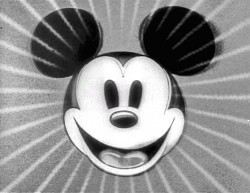 - Before there was video tape (which means before there were dvds), there was only 16mm film that you could project in your own home. I had (and still have) a nice collection of decaying movies and used to show these often. One of the regulars to show and watch and laugh at was the great Mickey short, The Whoopee Party. Everyone loved this short, no matter how many times we watched it. It’s a great film!
- Before there was video tape (which means before there were dvds), there was only 16mm film that you could project in your own home. I had (and still have) a nice collection of decaying movies and used to show these often. One of the regulars to show and watch and laugh at was the great Mickey short, The Whoopee Party. Everyone loved this short, no matter how many times we watched it. It’s a great film!
Hans Perk recently posted the drafts for this gem of a film on his amazing resource of a site, A Film LA. (Interesting that they spell the title “Whoopie” in the drafts, but use “Whoopee” on the title card.) Having produced a couple of posts full of frame grabs from this short, I decided to go back and add the animators’ names as sort of a mosaic, similar to what Mark Mayerson has invented in the blogosphere.

1.Hardie Gramatky | 2.Eddie Donnelly | 3.Les Clark

28. SA1 Hardie Gramatky | 28A. SA4 Les Clark | 29. SA1 Hardie Greamatky
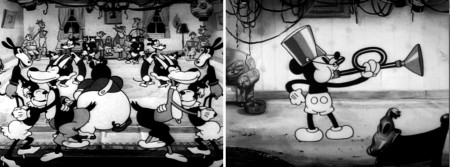
32. SA 1. Hardie Gramatky | 33. SA 31 Dave Hand

39. Johnny Cannon | 40. Hardcie Gramatky | 41. Norm Ferguson

41. (cont.) Norm Ferguson | 42. “Frenchy” de Trémaudan

43. Norm Ferguson | 44. “Frenchy” de Trémaudan | 45. Ben Sharpsteen

46. (cont.) 47. 48. Ben Sharpsteen

49. Ben Sharpsteen | 50. Tom Palmer | 51. Norm Ferguson

57. Ben Sharpsteen | 58. “Frenchy” de Trémaudan | 59. Tom Palmer

64. Tom Palmer | 65. “Frenchy” de Trémaudan | 66. Jack King
Animation &Animation Artifacts &Disney 01 Jul 2009 07:55 am
Stromboli – Part 5
- This is Part 4 of this large scene by Bill Tytla of Stromboli.
Part 1 saw a frenetic anger from Stromboli;
Part 2 he caught himself to get a hold on his emotions.
Part 3 he slowed down and prepared for the kiss (a break)
and the bow featured in Part 4.
This final part is on twos, as he slowly slowly moves across in the bow and gets up to salute.
It’s obviously beautiful work and a gem of scene.
There’s no doubt the key Assistant had a lot to do with the final scene as displayed here. Tytla had enormous respect for his clean up assistants and gave such credit. (You can read it in the Action Analysis class, posted on Hans Perk’s A Film LA site.)
-
“The first assistant must know as much as possible about animation. I think first assistant’s experience is the most practical way to get animation – you have everything that the animator has been working on – his exposure sheets, drawings, etc., and you know what he is trying to do.”
David Nethery has added the soundtrack from the final film and synced it up to this Pencil Test here.
We pick up the rest of the scene with the very next drawing.
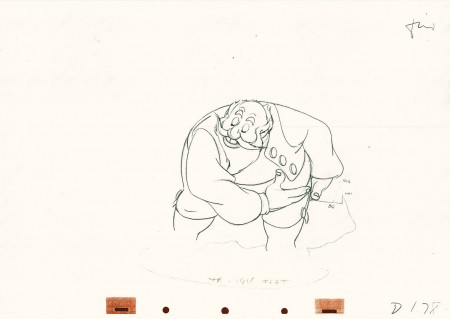 178
178(Click any image to enlarge.)
Here’s the final QT of it all together:
Stromboli
Click left side of the black bar to play.
Right side to watch single frame.
Animation &Animation Artifacts &Disney 24 Jun 2009 08:19 am
Tytla’s Stromboli – 4
- This is Part 4 of this large scene by Bill Tytla of Stromboli.
Part 1 saw a frenetic anger from Stromboli; Part 2 he caught himself to get a hold on his emotions. Part 3 he slowed down and prepared for the kiss (a break) and the bow upcoming in this, Part 4. Much of this part is on twos, as opposed to part 3 all on ones.
This is animation tour de force and there’s one part left to go next week.
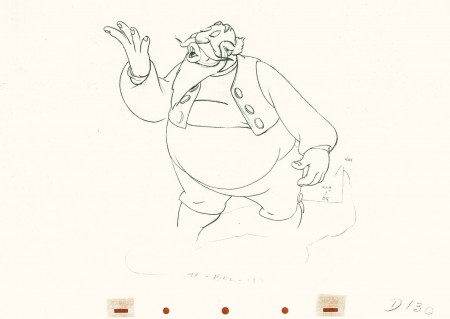 130
130(Click any image to enlarge.) The full scene with all drawings.
Click left side of the black bar to play.
Right side to watch single frame.
Animation Artifacts &Disney &Models 22 Jun 2009 07:16 am
Mickey Class
- Back in March 2007, Jenny Lerew, on her excellent site, Blackwing Diaries, posted a couple of the booklets that came in the Disney Animation Kits sold at Disneyland’s Art Corner. Aside from the Tips on Animation booklet and the How to Draw Goofy booklet, there was one on How to Draw Donald and another on How to Draw Mickey.
I’ll try to post these last two books in the next few days. However, for now, I’m interested in posting a professional analysis of Mickey, Goofy and Donald that was done as part of the process in the Disney studios in 1935.
The following is an analysis of Mickey given as a handout to all animators. There’s almost as much writing in it as there is drawing. The piece is introduced by Ted Sears and completes with analysis and drawings by Fred Moore.
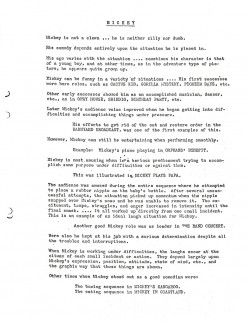 1
1 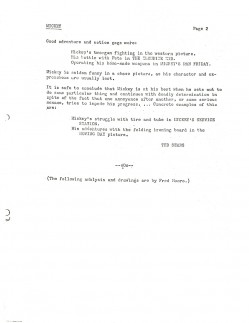 2
2(Click any image to enlarge.)
Animation &Animation Artifacts &Disney 17 Jun 2009 07:39 am
Tytla’s Stromboli 3
- This is part 3 of this large scene by Bill Tytla of Stromboli. The scene started in Part 1 with thoroughly frenetic anger from Stromboli. In Part 2 he tries to catch himself and get a grip on his emotions. Here in Part 3 he moves slowly and takes a 180° turn from where he started. The line against the curve. All this while playing out the lines from the scene. The drawing is stunning, the motion is brilliant, and the acting is the best animation has to offer. Those hands are just great; look at 126.
I pick up with the last drawing from Part 2.
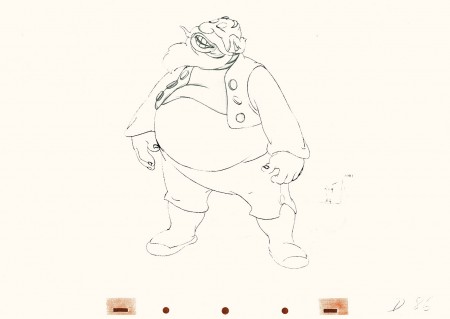 86
86(Click any image to enlarge.)
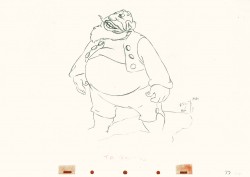 87
87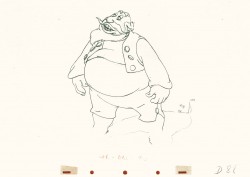 88
88
Tytla made sure he firmly planted Stromboli’s feet (in part 2)
before he attempted this firm bow.
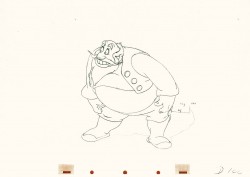
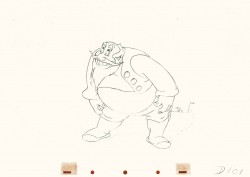 101
101
He’s made a solid line of the back, the strength of this move,
by using the left arm held firmly in place.
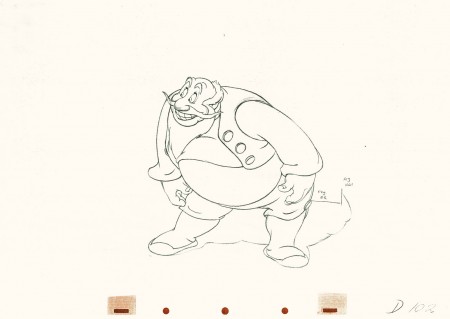 102
102
This is the bottom of the bow, now he goes back up.
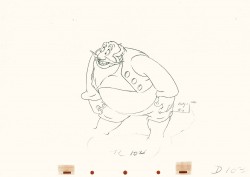
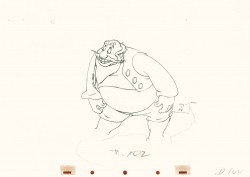 104
104
All of the shapes change naturally in the bow, though it looks
as if it remains a solid. No noticeable change. Solid weight.
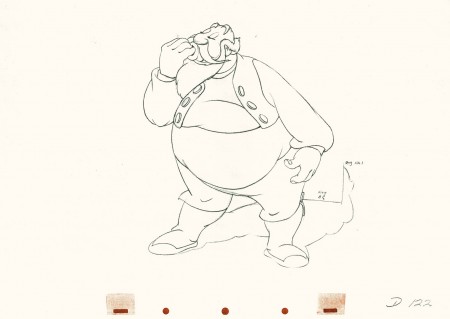 122
122
Watch the timing on the hand from here to #128
as Stromboli blows a kiss.
Many an animator today would pop it and call it animation.
Click left side of the black bar to play.
Right side to watch single frame.
Animation &Animation Artifacts &Disney 10 Jun 2009 07:34 am
Tytla’s Stromboli 2
This note arrived from Borge Ring after my first post Bill Tytla’s scene featuring Stromboli’s mood swing:
- The Arch devotees of Milt Kahl have tearfull misgivings about Wladimir Tytla’s magnificent language of distortions. ‘”Yes, he IS good. But he has made SO many ugly drawings”
Musicologists will know that Beethoven abhorred the music of Johan Sebastian Bach.
yukyuk
Børge
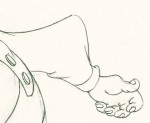
My first post spoke a bit about the distortion Tytla would use to his advantage to get an emotional gesture across. It’s part of the “animating forces instead of forms†method that Tytla used. This is found in Stromboli’s face in the first post. In this one look for this arm in drawing #50. It barely registers but gives strength to the arm move before it as his blouse follows through in extreme.
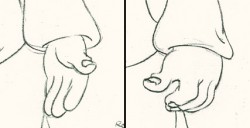 There’s also some beautiful and simple drawing throughout this piece. Stromboli is, basically, a cartoon character that caricatures reality beautifully. A predecessor to Cruella de Vil. In drawings 76 to 80 there’s a simple turn of the hand that is nicely done by some assistant. A little thing among so much bravura animation.
There’s also some beautiful and simple drawing throughout this piece. Stromboli is, basically, a cartoon character that caricatures reality beautifully. A predecessor to Cruella de Vil. In drawings 76 to 80 there’s a simple turn of the hand that is nicely done by some assistant. A little thing among so much bravura animation.
Many people don’t like the exaggerated motion of Stromboli. However, I think it’s perfectly right for the character. He’s Italian – prone to big movements. He’s a performer who, like many actors in real life, goes for the big gesture. In short his character is all there – garlic breath and all. It’s not cliched and it’s well felt and thought out. Think of the Devil in “Night on Bald Mountain” that would follow, then the simply wonderful and understated Dumbo who would follow that. Tytla was a versatile master.
Here’s part 2 of the scene:
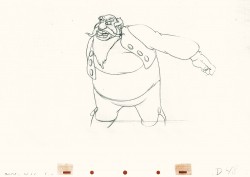 48
48 49
49(Click any image to enlarge.) The full scene with all drawings.
Click left side of the black bar to play.
Right side to watch single frame.
Animation &Animation Artifacts &Disney 03 Jun 2009 07:25 am
Tytla’s Stromboli
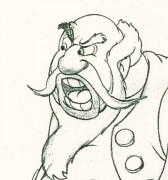 - Bill Tytla‘s work has to be studied and studied and studied for any student of animation. He was the best, and it’s pretty doubtful his work will be superceded. He brought beautiful distortion to many of the drawings he did, using it as a way to hammer home some of the emotions in the elasticity he was creating. Yet, the casual observer watching this sequence in motion doesn’t ever notice that distortion yet can feel it in the strength of the motion.
- Bill Tytla‘s work has to be studied and studied and studied for any student of animation. He was the best, and it’s pretty doubtful his work will be superceded. He brought beautiful distortion to many of the drawings he did, using it as a way to hammer home some of the emotions in the elasticity he was creating. Yet, the casual observer watching this sequence in motion doesn’t ever notice that distortion yet can feel it in the strength of the motion.
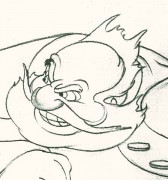
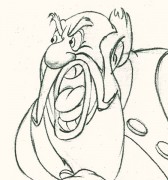
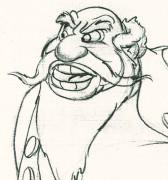
Four drawings (#1, 11, 22, & 48) that shift so enormously but call no attention to itself.
Brilliant draftsmanship and use of the forms.
Here we have the beginning: drawings 1-48. More will come in the future.
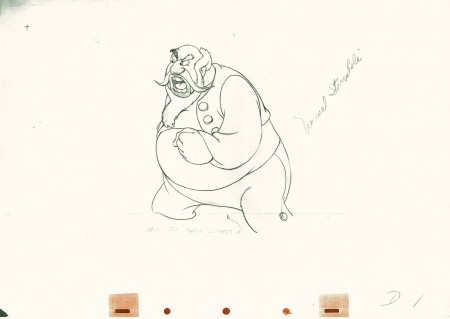 1
1(Click any image to enlarge.) The full scene with all drawings.
Click left side of the black bar to play.
Right side to watch single frame.
Articles on Animation &Disney 08 May 2009 08:04 am
Into the Future, Past
- Back in the 80s things were starting to perk up in animated features. After a long stretch of nothing but garbage, the people at Disney started taking the form seriously, and others followed suit.
I love posting old articles that have no relevance to anything anymore, but they’re worth viewing to see how seriously we take ourselves. This is an article written by the excellent LA writer, Charles Solomon, for The Hollywood Reporter‘s animation issue: Jan. 25, 1989.
.
.
Animation Features Thrive
BY CHARLES SOLOMON
Since his death in 1966, various artists have tried to assume Walt Disney’s technical and aesthetic leadership of animation. Although no one has matched the breadth of Disney’s vision, the art form is thriving at the studio he founded nearly 70 years ago. With almost 400 artists at work, including 41 full-fledged animators, the animation division of Walt Disney Pictures is larger now than it ever was during his lifetime.
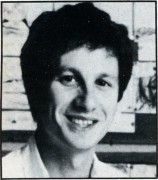 When the new management team took over the company in 1984, they announced plans for an ambitious rogram that in cluded production of a new, fully animated feature every 12 to 18 months. Disney had hoped to institute a similar schedule during the late ’30s, but the box-office failures of “Fantasia” and “Pinocchio” and the outbreak of World War II disrupted his plans.
When the new management team took over the company in 1984, they announced plans for an ambitious rogram that in cluded production of a new, fully animated feature every 12 to 18 months. Disney had hoped to institute a similar schedule during the late ’30s, but the box-office failures of “Fantasia” and “Pinocchio” and the outbreak of World War II disrupted his plans.
“I’m confident that we’ll be able to continue producing one new animated feature a year,” says Peter Schneider, vice president of feature animation at Walt Disney Pictures. “Quality versus speed is an issue we always wrestle with, and a sensitive one with the artists and myself. We continually struggle to find that balance.”
The first feature made entirely under the new leadership was “The Great Mouse Detective” (1986), an unpretentious and entertaining film that chronicled the adventures of Basil of Baker Street, a Sherlock Holmesian mouse. (Most of the work on “The Black Cauldron,” 1985, had been done under the previous administration.)
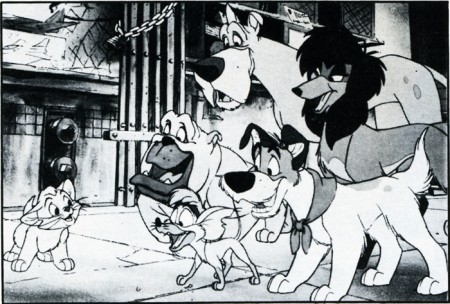
“Oliver & Co.”
The climactic confrontation between Basil and the archvil-lain, Ratigan, took place inside the clockwork mechanism of Big Ben. Computer graphics were used to create a three-dimensional world of gears and cogs, while the characters were animated by hand, an exciting example of the possibilities offered by mixing media. “Oliver & Company” (1988) included 11 minutes of computer animation of backgrounds and objects.
‘Rabbit’ Sets a Standard
The most innovative and imaginative animated film of the ’80s was the Touchstone/Amblin co-production, “Who Framed Roger Rabbit.” Directed by Bob Zemeckis, the film set a new standard for combining animation with live action and became the most successful film of 1988, grossing more than $150 million in its domestic release.
The popularity of the film led to a spate of character merchandise, and Roger appeared at the Disney theme parks and at many of the events celebrating the 60th birthday of Mickey Mouse. In the fall of 1988, the studio announced it would produce at least one “Maroon Cartoon” short starring Roger Rabbit and Baby Herman, and there were widespread rumors that a sequel was in the works.
“As it was in the past, the goal of the animation department is to create characters that live beyond their movies,” says Schneider. “With Roger, we’ve certainly created a character who’s entered the American lexicon: For the first time we’ve created a new character that has the potential to become a Mickey Mouse. I think you’re going to see a lot activity over the next five years for Roger: Over time, we hope to build him into a character as big as Mickey.”
“Obviously there’s been talk about a sequel to ‘Roger Rabbit,’ but the project really is in the talking phase right now,” adds animation producer Don Hahn. “A lot of people would like to do a sequel, but we’re still trying to recuperate and evaluate the plans for Roger. Sure, it’d be great to do another one, but it’s just too early to say.”
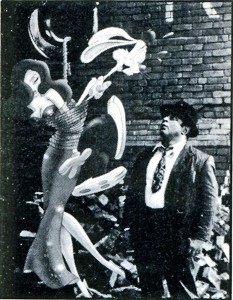 The success of “Roger Rabbit” has tended to overshadow “Oliver & Company,” a feature based loosely on Dickens’ “Oliver Twist.” The title character became an orphan kitten in contemporary New York City, and Fagin’s gang of pickpockets was transformed into a pack of stray dogs led by the super-cool Dodger. The upbeat tone, broader, cartoon-style animation and celebrity vocal cast (including Billy Joel, Bette Midler and Cheech Marin) placed the film in the tradition of “The Jungle Book” (1967) rather than “Pinocchio.”
The success of “Roger Rabbit” has tended to overshadow “Oliver & Company,” a feature based loosely on Dickens’ “Oliver Twist.” The title character became an orphan kitten in contemporary New York City, and Fagin’s gang of pickpockets was transformed into a pack of stray dogs led by the super-cool Dodger. The upbeat tone, broader, cartoon-style animation and celebrity vocal cast (including Billy Joel, Bette Midler and Cheech Marin) placed the film in the tradition of “The Jungle Book” (1967) rather than “Pinocchio.”
“Oliver & Company” opened in November 1988 to favorable reviews (in Time, Richard Corliss called it “the snazziest Disney cartoon since Walt died”) and good business. The film earned a very respectable $20 million in the first four weeks of its domestic release.
Disney’s next feature will be “The Little Mermaid” in late 1989. The writers have lightened the melancholy tone of the original Hans Christian Andersen story, and added seven songs by Howard Ashman and Alan Menken (“Little Shop of Horrors”). Previewed animation from the film looks impressive, and the animators are excited about their work.
” ‘Little Mermaid’ is definitely on track for Christmas of ’89,” says Schneider. “I think the quality of animation is up sub stantially from anything we’ve done before. You have to realize that we have a very young staff — most of the people real ly started animating on ‘The Great Mouse Detective.’ They got through that experience, then jammed through ‘Oliver’ learned some more in the process, and have now hit their stride as artists.”
Many of the top artists from the international crew who animated “Roger Rabbit” in London joined the Disney staff in Glendale and went to work on “Little Mermaid” when the production ended. This influx of artists helped to bring the animation staff to its current record level.
Building the Animation Staff
“It takes a long while to pick uf the particular subtleties that define a Disney animator,” observes Schneider. “The artists from London are extremely good animators, but they’re a little more accustomed to working in a more Warner Bros./Tex Avery style. Animators like Tom Sito, Chuck Harvey and Nik ‘ Ranieri are really starting to come along and I think they’ll hit their stride on the next picture. But for now, it’s our older artists — Glen Keane, Mark Henn, Reuben Aquino — who are really pulling this picture through.”
Slated to follow “Mermaid” in 1990 is “The Rescuers Down Under,” starring Bernard and Bianca, the mice from the popular comedy-adventure “The Rescuers” (1977). Although the Disney artists sometimes reused characters from the features (e.g. Jimiiny Cricket), “Down Under” represents the studio’s first sequel to an animated feature.
“We’ve never done a sequel before, but I think the appeal of the Bernard and Bianca characters justifies the departure,” says Schneider. “I think the film is going tosurprise a lot of peo pie with its warmth, its heart and its comedy. We’ve found a new setting and added some new characters: Jake, the kangaroo mouse; a really great Disney villain, McLeach; and his sidekick, Fenton.”
“Down Under” will be directed by two supervising animators from “Oliver &, Company,” Hendel Butoy and Mike Gabriel. (Butoy did the key animation of Tito, the hyperactive Chihuahua; Gabriel designed the characters and did animation of both Dodger and Oliver.) The decision to promote two of the studio’s best animators to director indicates that the pool of well-trained young artists remains small.
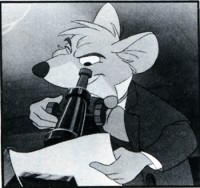 “I would say the biggest difficulty we face in the industry is finding experienced, qualified directors for our animated projects,” says Schneider. “We don’t see the kind of talent we’d like on the outside, so we’ve been taking staff artists who understand the Disney way and giving them the opportunity to fcdirect Disney pictures.
“I would say the biggest difficulty we face in the industry is finding experienced, qualified directors for our animated projects,” says Schneider. “We don’t see the kind of talent we’d like on the outside, so we’ve been taking staff artists who understand the Disney way and giving them the opportunity to fcdirect Disney pictures.
“Promoting from within does ^nean we’re robbing our core animation group to get directors,” he continues. “But I think having an artist like Hendel directing helps the animators improve: Everyone he worked with on ‘Oliver’ took a leap forward. I hope the same thing will happen as he and Mike direct ‘Down Under/ that they’ll bring the staff a notch further, and more than replace the animation they might otherwise do.”
“The Rescuers Down Under” will be followed by “Beauty and the Beast,” tentatively scheduled for 1991. The film is currently in preproduction, and experimental animation will begin in early 1989. Studio veteran Mel Shaw has done inspirational artwork for the film, and Schneider and Hahn agree that his handsome pastel drawings have set the style for the film and excited the animators about it.
To supplement the new features, Disney will continue to reissue its early classics. A special rerelease is planned for “Fantasia” in 1990 to mark the 50th anniversary of its premiere. For the occasion, the original Sto-kowski soundtrack is being restored with digital audio technology to replace the new soundtrack that film conductor Irwin Kostel and a pickup orchestra recorded in 1982.
“I think a lot of people have forgotten that ‘Fantasia’ really was a creative collaboration be tween Leopold Stokowski and Walt Disney,” says Hahn. “While the Kostel score was a great effort, you can’t retrofit something that was so tightly put together at that time. We’ve gone back to the original camera negatives, and when you see the film again, it will be in all its original splendor.”
A Force in TV
Disney has also become a force in the television cartoon market: The studio began producing Saturday morning animation in Japan with “The Wuzzles” and “Gummi Bears” in 1985. “The New Adventures of Winnie the Pooh” debuted on ABC in 1988. “DuckTales” (1987) remains the most successful cartoon show in syndication, and another syndicated series, “Chip and Dale’s Rescue Rangers,” is scheduled to debut in fall 1989. (The generally high quality of the Disney TV cartoons is balanced against the egregious live action/animation specials made for the studio by Joie Albrecht and Scot Garen.)
In April, Disney will open a second animation facility in Orlando, Fla., as part of the Disney/MGM Studios. A staff of approximately 90 artists will animate the classic Disney characters — Mickey Mouse, Donald Duck, Goofy, et al. — in a series of featurettes. The first film in the series will be either “Mickey’s Arabian Adventure” or “Mickey and the Emperor’s New Clothes.”
“The Florida studio is both exciting and extremely difficult,” says Schneider. “Six of our top artists are going there to head the staff; we’ll fill the rest of the positions with people from various schools and professionals from around the country. We’re hoping to expand both the need and the opportunities for young animators, which will only help us in California.”
The artists’ offices in the new building have glass walls that will enable visitors on the studio tour to see how an animated film is made. Jerry Rees (“The Brave Little Toaster”) is directing a series of short live-action/ animation films that explain the animation process. Robin Williams, Walter Cronkite, Walt Disney Co. chairman Michael Eisner, Roger Rabbit and Mickey Mouse provide the narration.
As he considers the possibilities of the expanded production facilities and schedule, Schneider grows thoughtful. “It’s my goal that each time we do a picture we get better at the craft of making movies,” he concludes. “I think the group of people that includes myself, Jeffrey (Katzenberg), Roy (Disney) and the animators really has the opportunity to set the agenda for animation for the next 50 years, as the older group of artists set it for Walt’s generation.” -k
Charles Solomon’s next book, Enchanted Drawings: A History of Animation in America, will be published by Alfred A. Knopf in fall 1989.
As a followup sometime, I’m planning to post an extremely long article from the NY TImes Magazine about the Bluth rebellion away from the Disney mainstream. It’ll take a while to put together.
For now, here’s an attractive ad from that very same issue of The Hollywood Reporter.
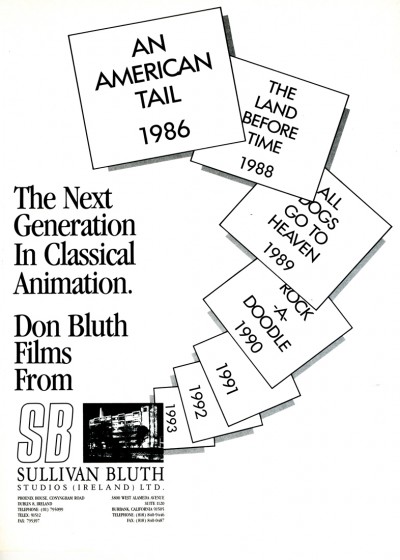
Animation Artifacts &Books &Disney 07 May 2009 07:54 am
Kinney Writes about Moore
- Since I posted a piece about Jack Kinney yesterday, I thought I’d add this to the mix. In an early version of his book, Walt Disney and Other Characters, Jack Kinney wrote this:
The little gentleman, Freddie Moore, also took a poke at Roy during a friendly game of volley ball. Fred was a very co-ordinated guy. He drew as easily as breathing, and as the saying goes “He could draw his ass”. A very high compliment.
I saved a few of his originals:
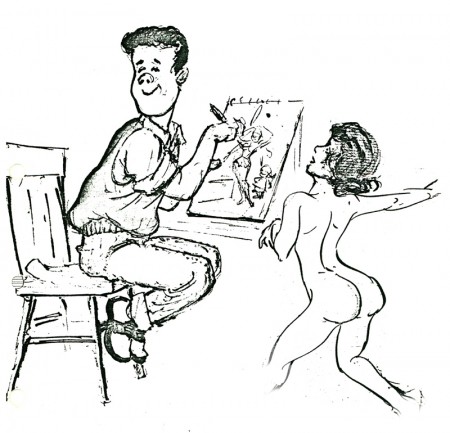
(Click any image to enlarge.)
- Fred and Fergie did all of the animation on the “THREE LITTLE PIGS”. Fred did the three pigs and Fergie drew the big bad wolf.
It was a sensation and introduced “Whose Afraid of the Big Bad Wolf” written by Ted Sears and Frank Churchill,
It was the song hit of the Depression. Burt Gillett directed.
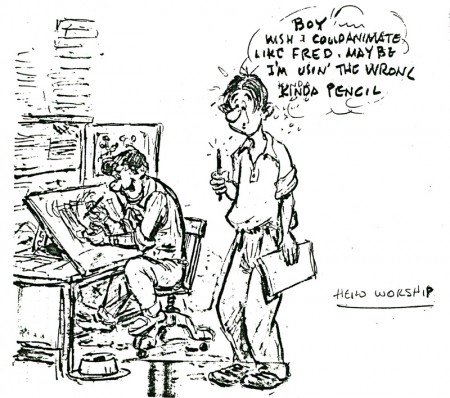
Art Babbitt, among others, might have argued with Jack Kinney’s allotment of all the animation to Fred Moore & Norm Ferguson.
By the way, these pages are xeroxes of xeroxes. Excuse the quality but enjoy the drawing.
Disney 06 May 2009 07:40 am
Art Babbitt & Jack Kinney
I received another delightful note from Borge Ring. It concerns Art Babbit and Jack Kinney:
- Jack Kinney as a strategist
You mention Art Babbitt in your comment on Mike Barrier’s keen review of the Milt Kahl Celebration. Here is a Babbitt experience you may not have heard about.
Art was inducted into the Marines during the Second World War.
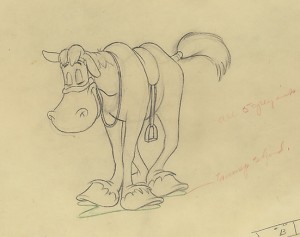 During his absence Disney had developed a brand new Goofy series written and directed by Jack Kinney and his brother Dick. These funny films starting with “How to Ride a Horse.” The CHAPLINESQUE animation was done by the much maligned Woolie Reitherman and the brilliant John Sibley. The familiar character of Goofy was drastically changed, His actionline was reversed to point up an optimistic chest instead of the hunched shoulders
During his absence Disney had developed a brand new Goofy series written and directed by Jack Kinney and his brother Dick. These funny films starting with “How to Ride a Horse.” The CHAPLINESQUE animation was done by the much maligned Woolie Reitherman and the brilliant John Sibley. The familiar character of Goofy was drastically changed, His actionline was reversed to point up an optimistic chest instead of the hunched shoulders
Jack Kinney wrote:
”Art had won the courtcase with Disney. He came back to the studio and was assigned to work on my new Goofys. He demanded [a Goofy with] shoulders and five fingers, because otherwise he could not use the live action he always shot of Pinto Colvig, I gave him a whole Goofy to do as his very own “The Baggage Buster” That would keep him peaceful for awhile. And in the meantime I could make two, three or four Goofys without having him fuck them up”
writes
Børge
After a slightly strange “Baggage Buster” Jack Kinney (or whoever) relented and Babbitt animated some excellent “oldfashioned” Goofy sequences in the new series such as “Goofy’s Glider.”
Babbitt was a top “oarsman” onboard the good ship Hyperion and developed way up into Rooty Toot Toot. Art and Tissa David were John Hubley’s favourite animators. Hubley used to phone him from NY and beg: ‘”Thirty feet, Art. Juat thirty feet. ..please”
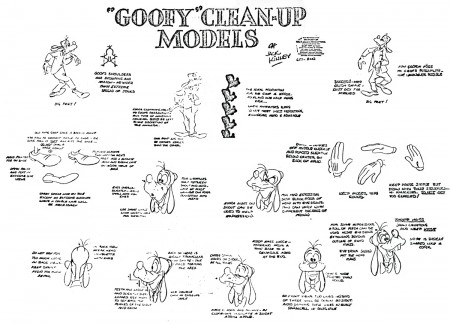
Copy of a copy of a copy.
In 2006, I wrote about Art Babbitt’s work with Hubley on the Carousel feature here.
The beautiful horse, from How To Ride A Horse, comes from Jenny Lerew’s collection.
The Jack Kinney drawing is from the Disney Bulletin.
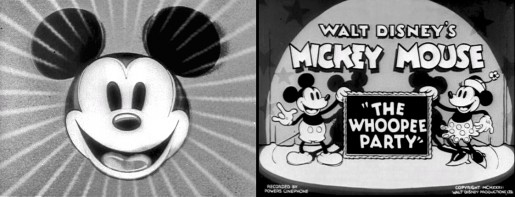
 1
1
 2
2
 3
3
 4
4
 5
5
 6
6 7
7 8
8 9
9 10
10
 11
11
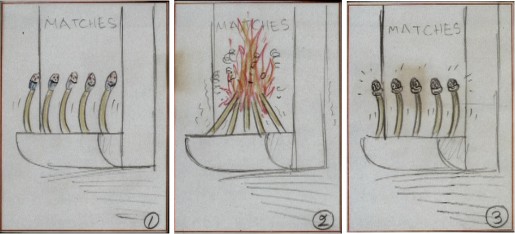 12
12
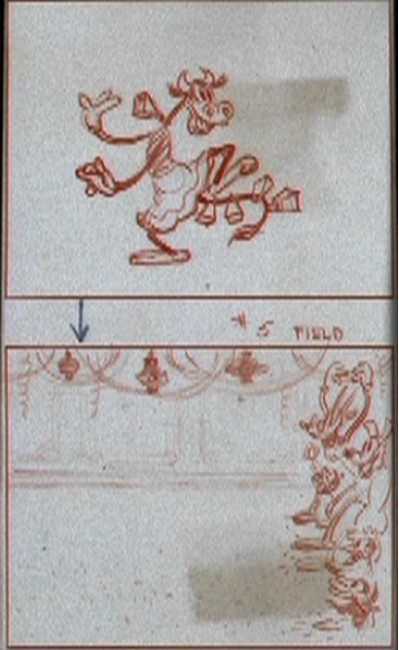 13
13 14
14
 15
15
 16
16 17
17

